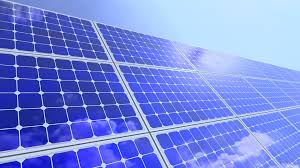The solar panels of about 40,000 Massachusetts households and community groups cut electricity prices for all of the approximately three million electricity ratepayers in the state, even those without the panels, also called photovoltaics (PV) systems.
“Until now, people have focused on how much was being saved by those who owned PV,” says Robert Kaufmann, professor of Earth and environment at Boston University. “What this analysis quantified was that it actually generates savings for everybody.”
The study looks at how electricity prices and consumption, power plant efficiency, and the capacity utilization of PV systems, are related to one another on an hourly basis.
The paper, published in the journal Energy Policy, notes that using an hourly average for electricity prices, rather than a daily average—as many past studies have done—is a more accurate way to quantify how PV systems affect electricity prices, because such prices fluctuate greatly throughout the day.
There are about one million solar installments—private rooftop, community, and commercial—in the US, and they account for about one percent of the electricity produced in this country. With the cost of PV systems continuing to fall, that number is expected to double in the next two years, according to the Solar Energy Industries Association (SEIA), a nonprofit trade association.

